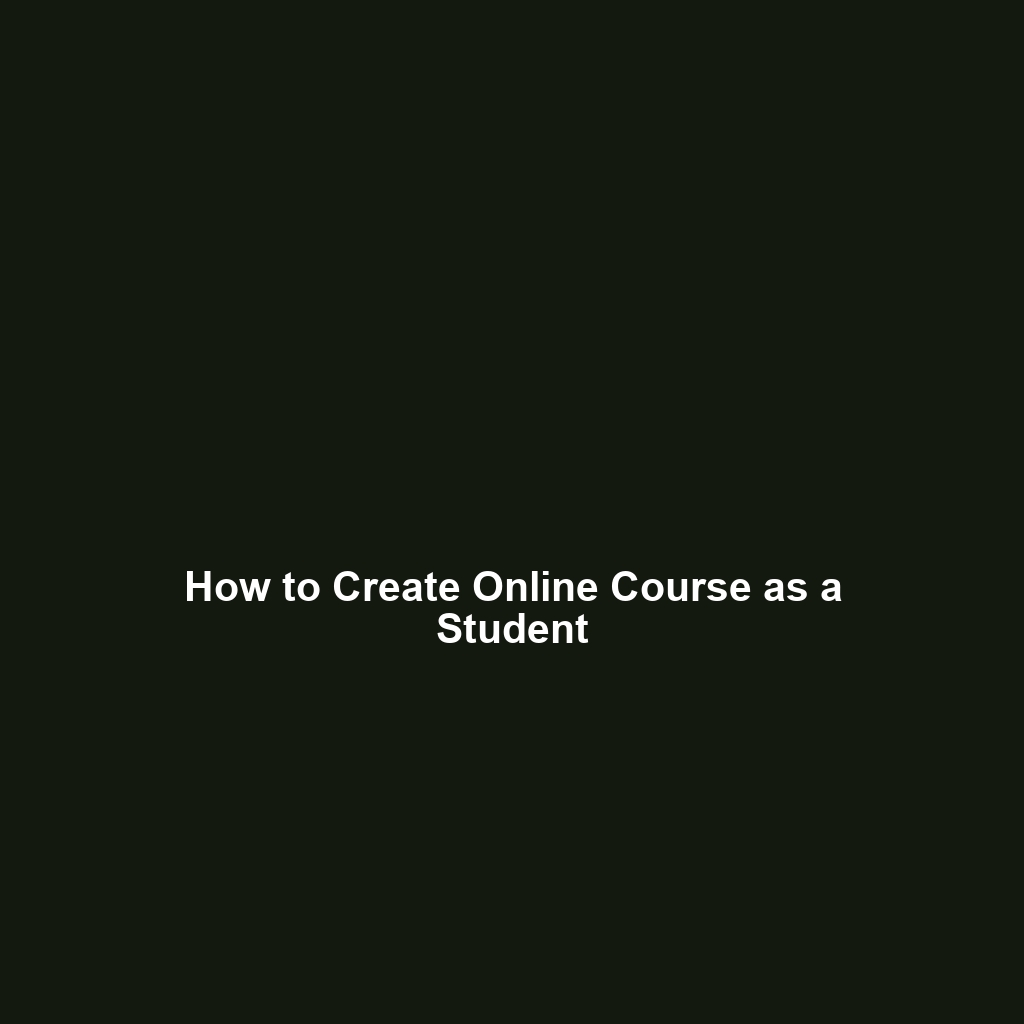So, you’re a student, and you’re thinking, “How can I create an online course and make money while still juggling my studies?” Good news—you totally can! Creating an online course as a student isn’t just for tech gurus or top-tier experts. If you know something valuable (which you do), and you can explain it well, you’re already halfway there.
The best part? You don’t need fancy equipment or a huge budget to get started. You just need a good plan, some free tools, and a bit of patience. Let’s break it down step by step.
Why Should You Create an Online Course as a Student?
Honestly, why not? Research shows that students can successfully create online courses by picking a niche, planning their content, and using free platforms. And guess what? You don’t have to be perfect. Some of the most successful courses started as simple ideas recorded on a phone!
A great example is a 16-year-old who created a Java programming course and gained thousands of students. If he can do it, so can you.
Step 1: Pick a Topic You Actually Know (and Others Want to Learn)
Before you dive in, ask yourself: What do I know well enough to teach? It could be:
- Something you’re already studying (math, biology, business, etc.).
- A skill you’ve mastered (graphic design, coding, language learning).
- A hobby you enjoy (photography, baking, playing an instrument).

How to Check If Your Online Course Has Demand
- Use Google Trends to see if people are searching for your topic.
- Check online course platforms like Udemy and Coursera to see what’s already selling.
- Ask around! Post on social media and see if people would be interested in learning from you.
Step 2: Plan Your Course Without Overthinking It
You don’t need a perfect roadmap—just a simple structure. Here’s a cheat sheet:
- Introduction – Explain what students will learn.
- Core Lessons – Break your content into short, engaging lessons (5-15 minutes each).
- Activities/Assignments – Give exercises or quizzes to reinforce learning.
- Conclusion – Wrap it up and suggest next steps.
Free templates from Teachable can help you outline your course easily.
Step 3: Create Your Content on a Budget
No fancy camera? No problem! Here’s how to create a great course with minimal resources:
- Use your phone – Today’s smartphones have amazing cameras.
- Record your screen – For tutorials, use free tools like OBS Studio or Loom.
- Edit with free tools – Canva and iMovie (Mac) or CapCut (Android/iPhone) are great.
- Keep it short and engaging – Bite-sized videos are easier to digest.
Step 4: Where to Host Your Course for Free
You need a platform where people can access and possibly buy your course. Here are some options:
| Platform | Free Plan Details | Key Features | Limitations |
|---|---|---|---|
| Thinkific | Free plan for one course with unlimited students | Mobile-friendly, quizzes, certificates | Advanced features require upgrade |
| Udemy | Free to upload courses, takes a commission | Huge audience, built-in marketing | High competition, takes a percentage |
| YouTube | Free to upload videos | Massive reach, ad revenue potential | Lacks structured course features |
| TrainerCentral | Free trial available | Customizable learning paths, community | Paid plans unlock more features |
If you want full control, Thinkific’s free plan is a great starting point. If you want more exposure, Udemy is solid (but they take a big cut of your earnings).
Step 5: How to Price Your Online Course as a Student (Without Scaring People Off)
Pricing is tricky, but here’s how to do it:
- Check competitors – See what similar courses charge.
- Consider your audience – If students are your target, keep it affordable.
- Start with a low or free offer – Get testimonials, then increase the price later.
Step 6: Promote Like a Pro (Even Without an Audience)
Even the best course won’t sell itself. Here’s how to spread the word:
- Post on social media – Instagram, Twitter, TikTok—wherever your audience hangs out.
- Answer questions on Reddit and Quora – Give value, then mention your course.
- Host a free webinar – Let people see your teaching style before they buy.
- Ask friends to share – A little word-of-mouth goes a long way.
Step 7: Build a Learning Community (and Keep Students Engaged)
A strong community makes learning fun and keeps students coming back.
- Create a private Facebook or Discord group – Engage with students beyond the course.
- Offer live Q&As – Interact with students to keep them engaged.
- Ask for feedback – Use it to improve and make your course better over time.
Challenges You’ll Face (And How to Beat Them)
| Challenge | Solution |
|---|---|
| Not enough time | Create lessons in small batches on weekends |
| No expensive equipment | Use a smartphone and free editing tools |
| No experience teaching | Start by explaining concepts to friends |
Success Story: A 16-Year-Old Created a Java Course and Made It Work
Meet Varand. He was just 16 when he created a Java course from scratch. He started with basic knowledge, used free tools, and built his website. Now, his course has thousands of students. The lesson? You don’t need to be an expert—just someone willing to teach.
Final Thoughts: Start Small, Keep Improving
Creating an online course as a student is easier than you think. Just start with what you know, use free tools, and improve as you go. You don’t need to be perfect—just get started. Who knows? Your course could be the next big thing!
References
- TrainerCentral, “How to Create an Online Course: A Step-by-Step Guide,” TrainerCentral
- E-Student, “How to Create an Online Course for Free,” E-Student
- Learn Code With Me, “16-Year-Old Student Creates an Online Java Course,” Learn Code With Me
- Google Trends, “Check Trending Topics,” Google Trends
- Thinkific, “Free Tier for Course Hosting,” Thinkific
- Teachable, “Create an Online Course Your Students Will Love,” Teachable
- Coursera, “How to Create an Online Course Course,” Coursera
What would your topic be if you had to teach an online course? Drop it in the comments!


